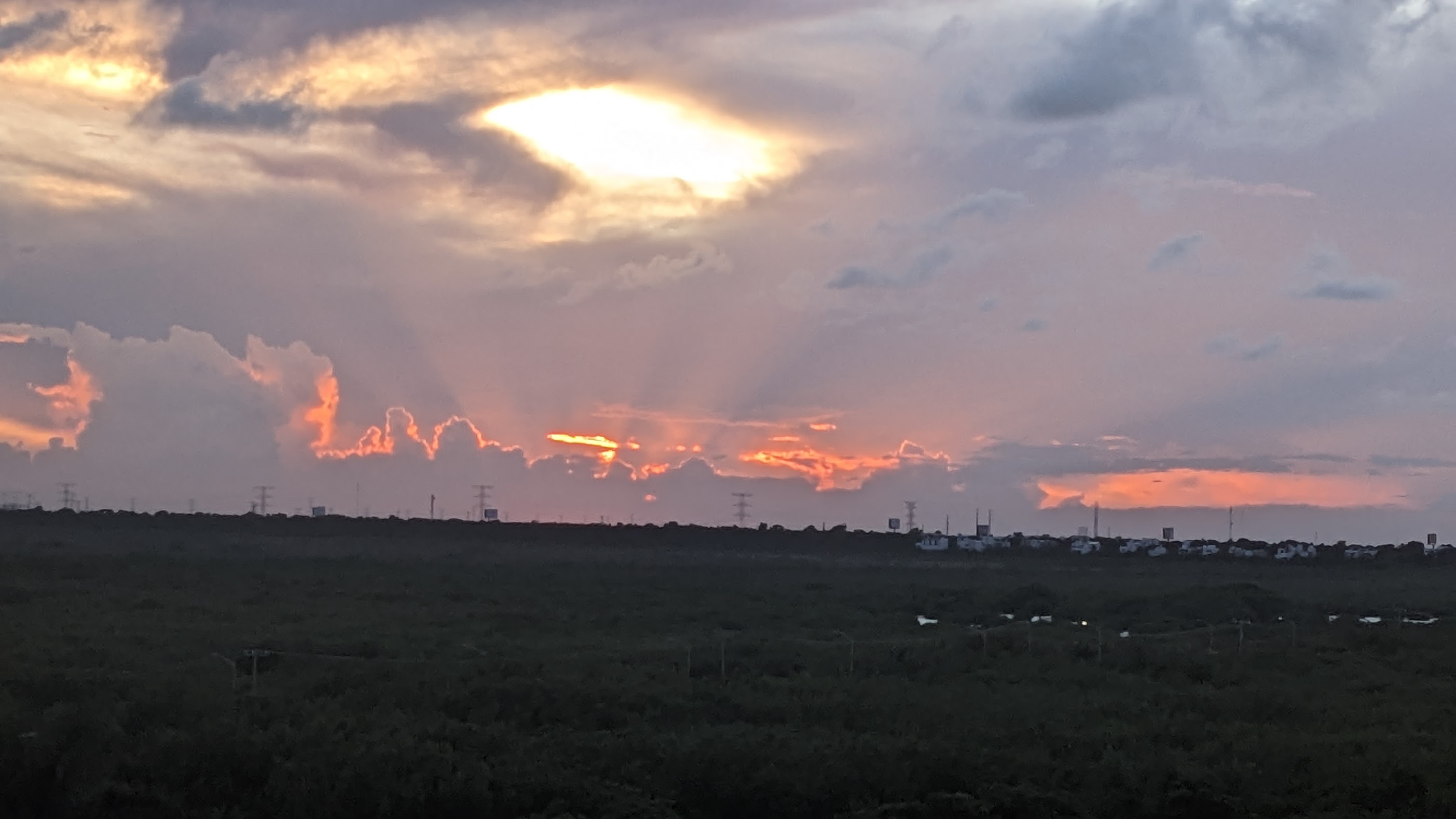Crepuscular rays on:
[Wikipedia]
[Google]
[Amazon]
 Crepuscular rays are sunbeams that originate when the
Crepuscular rays are sunbeams that originate when the
 Crepuscular rays are sunbeams that originate when the
Crepuscular rays are sunbeams that originate when the Sun
The Sun is the star at the center of the Solar System. It is a nearly perfect ball of hot plasma, heated to incandescence by nuclear fusion reactions in its core. The Sun radiates this energy mainly as light, ultraviolet, and infrared radi ...
is just below the horizon
The horizon is the apparent line that separates the surface of a celestial body from its sky when viewed from the perspective of an observer on or near the surface of the relevant body. This line divides all viewing directions based on whether i ...
, during the twilight
Twilight is light produced by sunlight scattering in the upper atmosphere, when the Sun is below the horizon, which illuminates the lower atmosphere and the Earth's surface. The word twilight can also refer to the periods of time when this il ...
period. Crepuscular
In zoology, a crepuscular animal is one that is active primarily during the twilight period, being matutinal, vespertine, or both. This is distinguished from diurnal and nocturnal behavior, where an animal is active during the hours of daylig ...
rays are noticeable when the contrast between light and dark is most obvious. Crepuscular comes from the Latin word , meaning "twilight". Crepuscular rays usually appear orange because the path through the atmosphere at sunrise
Sunrise (or sunup) is the moment when the upper rim of the Sun appears on the horizon in the morning. The term can also refer to the entire process of the solar disk crossing the horizon and its accompanying atmospheric effects.
Terminology
Al ...
and sunset
Sunset, also known as sundown, is the daily disappearance of the Sun below the horizon due to Earth's rotation. As viewed from everywhere on Earth (except the North and South poles), the equinox Sun sets due west at the moment of both the spring ...
passes through up to 40 times as much air as rays from a high Sun at midday
Noon (or midday) is 12 o'clock in the daytime. It is written as 12 noon, 12:00 m. (for meridiem, literally 12:00 noon), 12 p.m. (for post meridiem, literally "after noon"), 12 pm, or 12:00 (using a 24-hour clock) or 1200 (military time).
Solar ...
. Particles in the air scatter short-wavelength
In physics, the wavelength is the spatial period of a periodic wave—the distance over which the wave's shape repeats.
It is the distance between consecutive corresponding points of the same phase on the wave, such as two adjacent crests, tro ...
light (blue and green) through Rayleigh scattering
Rayleigh scattering ( ), named after the 19th-century British physicist Lord Rayleigh (John William Strutt), is the predominantly elastic scattering of light or other electromagnetic radiation by particles much smaller than the wavelength of the ...
much more strongly than longer-wavelength yellow and red light.
Loosely, the term ''crepuscular rays'' is sometimes extended to the general phenomenon of rays of sunlight
Sunlight is a portion of the electromagnetic radiation given off by the Sun, in particular infrared, visible, and ultraviolet light. On Earth, sunlight is scattered and filtered through Earth's atmosphere, and is obvious as daylight when t ...
that appear to converge at a point in the sky, irrespective of time of day.
A rare related phenomena are anticrepuscular rays
Anticrepuscular rays, or antisolar rays, are meteorological optical phenomena similar to crepuscular rays, but appear opposite the Sun in the sky. Anticrepuscular rays are essentially parallel, but appear to converge toward the antisolar ...
which can appear at the same time (and coloration) as crepuscular rays but in the opposite direction of the setting sun (east rather than west).
See also
* * * * *References
External links
{{optics-stub Atmospheric optical phenomena Sun